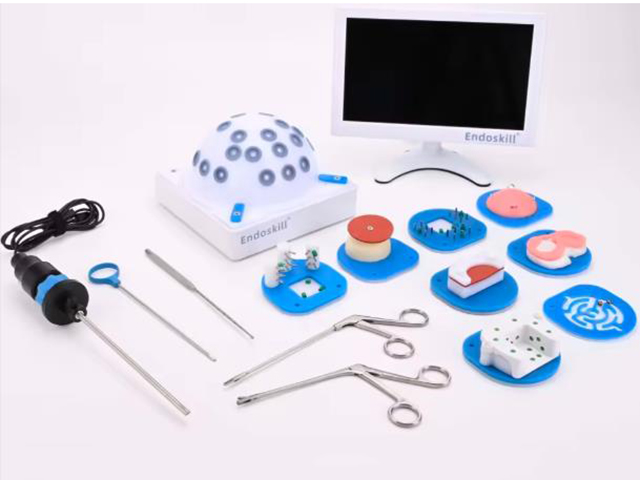surgery arthroscopic simulator training box price
Like laparoscopic simulators, arthroscopic simulators are teaching practice tools whose main purpose is to help medical students and orthopedic surgeons better master the skills of performing arthroscopic surgery. Arthroscopic surgery is a minimally invasive surgical technique used to diagnose and treat joint diseases, usually involving the knee, shoulder, ankle, elbow or wrist. Therefore, arthroscopic simulators have become an indispensable tool for medical students to learn orthopedic techniques.

Arthroscopic simulators can be divided into two categories: mechanical models and computer-based virtual reality (VR) systems.
Mechanical models:
Arthroscopy training box usually consists of a box with an artificial joint inside. Medical students will insert actual arthroscopic instruments through a small inlet in the box to practice operating skills such as probing, grasping, cutting and suturing. These models may include various tissue substitutes, such as artificial bionic materials or animal tissues, to simulate the real human joint structure.
Virtual reality simulators:
Virtual reality arthroscopic simulators provide a digital environment where users can practice arthroscopic surgery with realistic graphics and tactile feedback. Haptic devices simulate touch, allowing users to feel resistance and texture, just like in real surgery. VR simulators can offer a wide range of scenarios, adjustable difficulty levels, and performance metrics for skill assessment.
Arthroscopy Simulator Training Instruemnt Key Features:
Lifelike Replication: Designed to closely replicate the visual and tactile sensations encountered during actual arthroscopy.
Skill Development: Simulators allow for repeated practice of specific techniques without risk to the patient.
Error-Free Environment: Trainees can make mistakes and learn from them without risk to real patients.
Performance Tracking: Many simulators provide data on user performance that can be used for self-assessment or by instructors for feedback.
Educational Content: Some simulators come with instructional modules covering anatomy, pathology, and procedural steps.
Advantages of using an arthroscopic simulator:
Enhanced learning: Simulators can accelerate learning by providing immediate feedback and allowing deliberate practice.
Patient safety: By improving surgical skills before entering the operating room, surgeons can reduce the risk of complications and improve patient outcomes.
Cost-effective training: Although simulators have an initial cost, they can reduce overall training expenses by minimizing the need to practice on live patients or expensive cadavers.
Current technology:
As of 2024, technological advances have resulted in more sophisticated simulators that incorporate high-resolution graphics, advanced haptics, and AI-driven scenarios. These improvements continue to enhance the realism and effectiveness of arthroscopic simulation training.
What are the main supporting equipment for arthroscopy simulator training?
arthroscopy training box set
Camera
● Outer diameter: 5.5mm
● Working length: 15.5mm
●Resolution:1280*720
●No disortion,Adjustable focus,
●with 8 LED Lights
● WIN,MAC compatible
●with Android 8.0 or later
●USB Type C/A
arthroscopic simulator price
If you are interested in exploring or purchasing an arthroscopic simulator, the price of an arthroscopic simulator may be one of your top concerns, and you will usually need to contact a medical device supplier or a company that specializes in surgical training solutions. These companies usually have sales representatives who can provide pricing details on available products and arrange for a demonstration.



Post a Comment